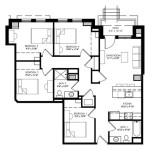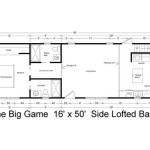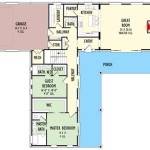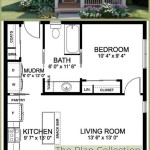Floor Plan Examples For Homes
A floor plan is a drawing that shows the layout of a home. It includes the location of the rooms, doors, windows, and other features. Floor plans are used to help visualize the space and to make decisions about the design of the home. There are many different types of floor plans, each with its own advantages and disadvantages. Here are a few examples of common floor plans:
One-Story Floor Plans
One-story floor plans are the most common type of floor plan. They are simple and easy to understand, and they can be built on a variety of lot sizes. One-story floor plans typically have a living room, kitchen, dining room, and bedrooms all on the same level. This can make it easy to move around the house and to keep an eye on children or pets. However, one-story floor plans can also be less private than other types of floor plans, as there is no separation between the living spaces and the bedrooms.
Two-Story Floor Plans
Two-story floor plans are another common type of floor plan. They have two levels, with the bedrooms typically located on the second floor and the living spaces on the first floor. This can provide more privacy than a one-story floor plan, as the bedrooms are separated from the living spaces. However, two-story floor plans can also be more difficult to navigate, especially for people with mobility issues. Additionally, two-story floor plans typically require more stairs, which can be a safety hazard for young children and elderly adults.
L-Shaped Floor Plans
L-shaped floor plans are a good option for homes that are built on narrow or irregular-shaped lots. They have two wings that are connected at a right angle. This can create a more private outdoor space, as the backyard can be tucked away from the street. L-shaped floor plans can also be more energy-efficient, as the two wings can help to block the wind and cold.
U-Shaped Floor Plans
U-shaped floor plans are similar to L-shaped floor plans, but they have three wings instead of two. This can create a even more private outdoor space, and it can also allow for more natural light to enter the home. U-shaped floor plans are often used for larger homes, as they can provide more space for living and entertaining.
Split-Level Floor Plans
Split-level floor plans are a good option for homes that are built on sloping lots. They have two or more levels that are connected by a few stairs. This can create a more interesting and dynamic space, and it can also help to take advantage of the natural slope of the lot. However, split-level floor plans can also be more difficult to navigate, especially for people with mobility issues.
Choosing the Right Floor Plan
The best floor plan for your home will depend on your individual needs and preferences. Consider the size of your family, your lifestyle, and the lot size that you have available. You should also consider your budget, as some floor plans can be more expensive to build than others. If you are not sure which floor plan is right for you, talk to a builder or architect. They can help you to create a floor plan that meets your specific needs.

12 Examples Of Floor Plans With Dimensions

Ready To Use Sample Floor Plan Drawings Templates Easy Blue Print Floorplan Ezblueprint Com

Floor Plans Types Symbols Examples

House Floor Plan Template

Free Floorplan Template Inspirational Home Plans Sample House Floor Simple Plan Layout

Home Floor Plans House Plan Drawings

Ready To Use Sample Floor Plan Drawings Templates Easy Blue Print Floorplan Ezblueprint Com

Free Editable Open Floor Plans Edrawmax

Example Of An Apartment Floor Plan On Which The Residents Have Drawn Scientific Diagram

Ready To Use Sample Floor Plan Drawings Templates Easy Blue Print Floorplan Ezblueprint Com Drawing Plans How








